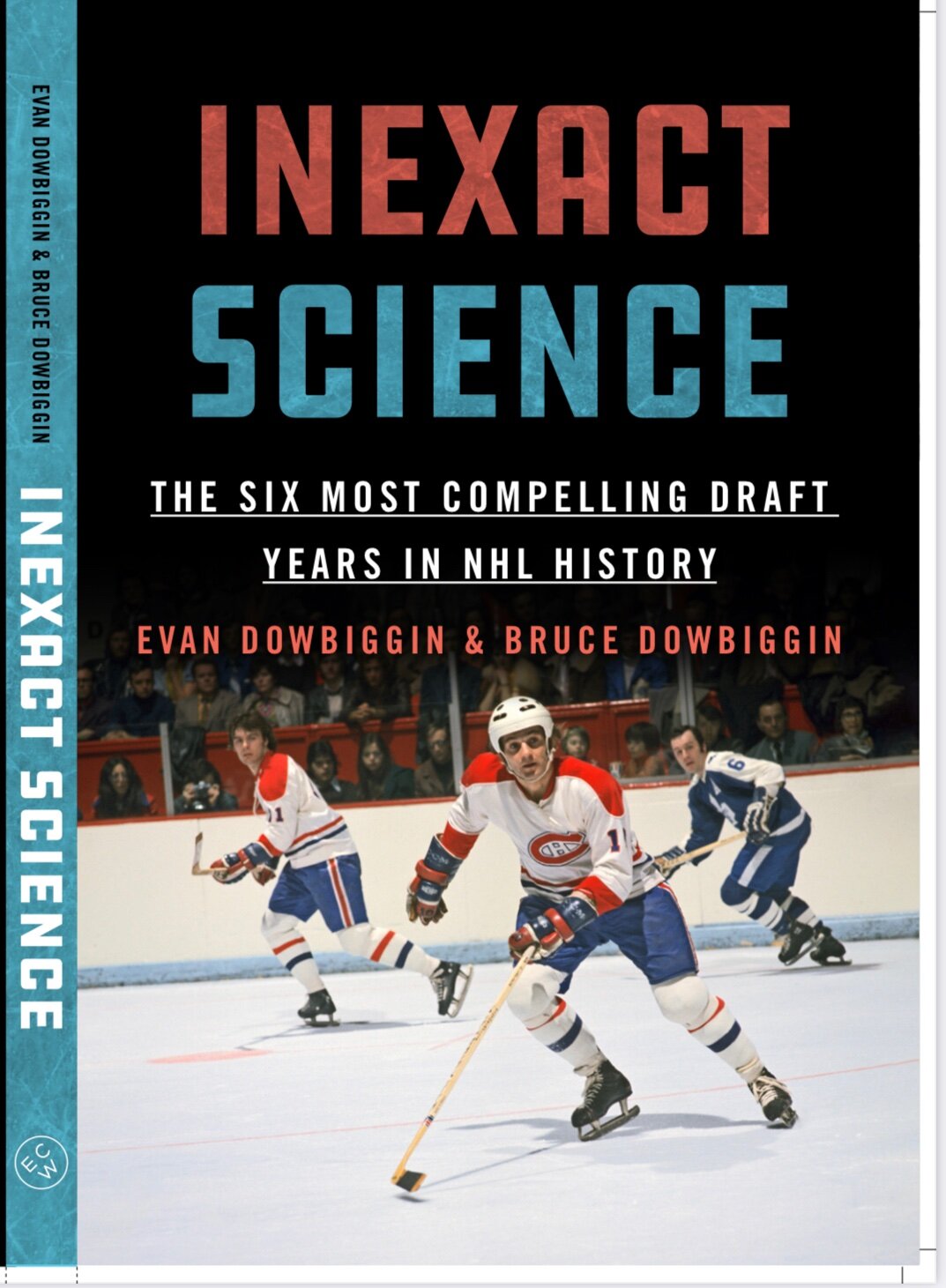Book Excerpt: The Price Was Right-- Even Without A Cup
The NHL season has begun, for the time being, without Pittsburgh’s star Sidney Crosby and Montreal’s goalie Carey Price. Crosby is rehabbing from surgery on his wrist while Price has entered the NHL/ NHLPA assistance program. Crosby should be back in a few games while there is no timetable for the return of Price to the Canadiens.
Ironically the two men are also conjoined by their status as star products of the 2005 NHL amateur draft, held at the tail end of the 2004-2005 Gary-Bettman orchestrated lockout that scrubbed an entire season. Along with Anze Kopitar, Tuuka Rask and Kris Letang they highlight the best products of that draft— held in private at a hotel.
As my son Evan and I describe in out new book InExact Science: The Six Most Compelling Draft Years in NHL History (ECW, ) the Penguins were there lucky winers of a Crosby sweepstakes as controversial new selection rules caused by the lockout determined that the Pens got Sid The Kid (Bobby Ryan went #2 to Anaheim). The result has been three Pittsburgh Stanley Cups (2009, 2016, 2017) and Crosby’s status as one of the Top 10 players of all time.
Price, meanwhile, was the product of a gamble on a goalie by the Canadiens scouts, who chose him a lofty fifth overall. While Price has proven an elite goalie, winning the Hart Trophy and Olympic gold medals, his selection upset Habsland. While that controversy has subsided, he has yet to win a Cup in Montreal. Last spring’s unlikely run to the Finals by the Habs is the closest he’s come to an NHL title. Meanwhile, Jonathan Quick, chosen #72 overall by the Kings in 2005, has two rings to his name.
In this excerpt from the book, we discussed how the strategy of taking goalies that high in a draft has fallen out of favour— despite Price’s evident value:
“Price came at the tail end of an era when highly touted goalies were still taken as top 10 selections. The strategy of goalies being taken so high in a draft or paid the salary of an elite forward has come under fire in recent years—no doubt strengthened by the Canadiens’ recent decline in fortunes despite Price’s presence. And yet, they often do help teams strike it when going that high too (see Tom Barrasso, Grant Fuhr, Marc-André Fleury).
Even with his success, the goalie fascination has dropped off measurably in the first rounds. As CAA agent J.P. Barry explains,
Some of it has to do with not actually having any consensus on the league’s elite top-10 goaltenders. They really don’t come around that often. It’s rare for a goalie to have developed at that level at age 18. Goalies are generally late developers. You don’t really see the dominance of a goaltender until the 22-to-25 range. Even Price’s best years didn’t start until after turning 23.
The gap has been shrinking between a good goalie and a great one too. It’s very difficult to predict a generational goaltender, which really is what it takes to select a goalie that high in the draft. It’s an extreme risk-reward scenario. It’s a high risk, but it could be a really high reward, and yet it can also be a disaster to your development system if you’re wrong. I think there has to be a significant margin over replacement cost for a team to be willing. But Montreal that year was an example of a group that did their scouting, believed in the scouting, stuck by the scouting and took the pick no matter what controversy they thought it could bring about, so I do think that’s a good example of stepping out of the box and sticking to your convictions.
To Barry’s point, Price’s closest competitors from that draft have done pretty well themselves without getting chosen at number five overall selection. While our re-draft of 2005 has Price going after Jonathan Quick, it’s a close race considering Quick has less individual hardware and has dropped off in recent years. But Quick’s two Stanley Cups—especially his 2012 Conn Smythe Trophy showing—give him the edge as the most accomplished goalie from this particular year.
Even if, arguably, his overall talent and technique are not superior to Price’s, his peak proved more productive, more significant and more legendary. Plus, he had to fight to reach his esteemed position in the league after being an unheralded third-round pick seven years prior to his 2012 triumph. Let’s say he won the battle if not the PR war with Price.
Price, on the other hand, will have to rack up several (Finals) appearances and wins for another few years before his Hall of Fame case becomes ironclad. That said, no one in their right hockey mind should argue that a goalie from that same draft, such as Tuukka Rask or Ben Bishop, would have been a better investment for Montreal. While those two have a combined three finals appearances to Price’s zero, their individual awards case isn’t quite as stocked either.”
For now we await word on Price’s treatment before once again assigning him the status of legend. Meanwhile, NHL teams seem content to find goalies when they need them— not necessarily in the draft. Since 2000, just two first-rounders— Marc-André Fleury and Martin Brodeur— have won the Cup for the team that drafted him.
Price’s greatest legacy may be the absence of goalies being selected at the top of the draft
Bruce Dowbiggin @dowbboy is the editor of Not The Public Broadcaster (http://www.notthepublicbroadcaster.com). The best-selling author of Cap In Hand is also a regular contributor to Sirius XM Canada Talks Ch. 167. A two-time winner of the Gemini Award as Canada's top television sports broadcaster, his new book with his son Evan is called InExact Science: The Six Most Compelling Draft Years In NHL History is now available on http://brucedowbigginbooks.ca/book-personalaccount.aspx


